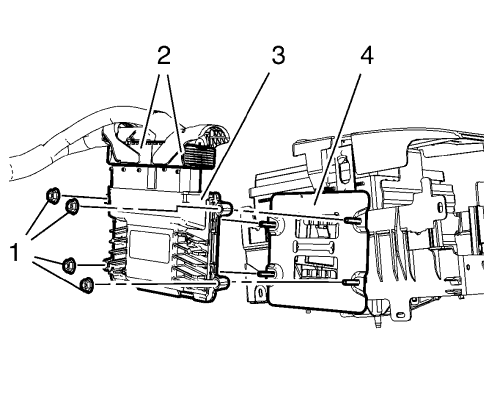Orlando |
||||||||
|
|
|
|||||||
Caution:
• Turn the ignition OFF when installing or removing the control module connectors and disconnecting or reconnecting the power to the control module (battery cable, powertrain control module (PCM)/engine control module (ECM)/transaxle control module (TCM) pigtail, control module fuse, jump leads, etc.) in order to prevent internal control module damage. • Control module damage may result when the metal case contacts battery voltage. DO NOT contact the control module metal case with battery voltage when servicing a control module, using battery booster cables, or when charging the vehicle battery. • In order to prevent any possible electrostatic discharge damage to the control module, do no touch the connector pins or the soldered components on the circuit board. • Remove any debris from around the control module connector surfaces before servicing the control module. Inspect the control module connector gaskets when diagnosing or replacing the control module. Ensure that the gaskets are installed correctly. The gaskets prevent contaminant intrusion into the control module. • The replacement control module must be programmed.
Note: It is necessary to record the remaining engine oil life. If the replacement module is not programmed with the remaining engine oil life, the engine oil life will default to 100 percent. If the replacement module is not programmed with the remaining engine oil life, the engine oil will need to be changed at 5 000 km (3,000 mi) from the last engine oil change.

Note: If the ECM is to be replaced, the ECM must be RESET (prepared for removal) prior to removal from the vehicle. Failing to reset the ECM will result in the following: • Inability to test the ECM for warranty purposes • Inability to use the ECM in other vehicles

Caution: Refer to Fastener Caution in the Preface section.
| © Copyright Chevrolet. All rights reserved |
| © Copyright Chevrolet. All rights reserved |